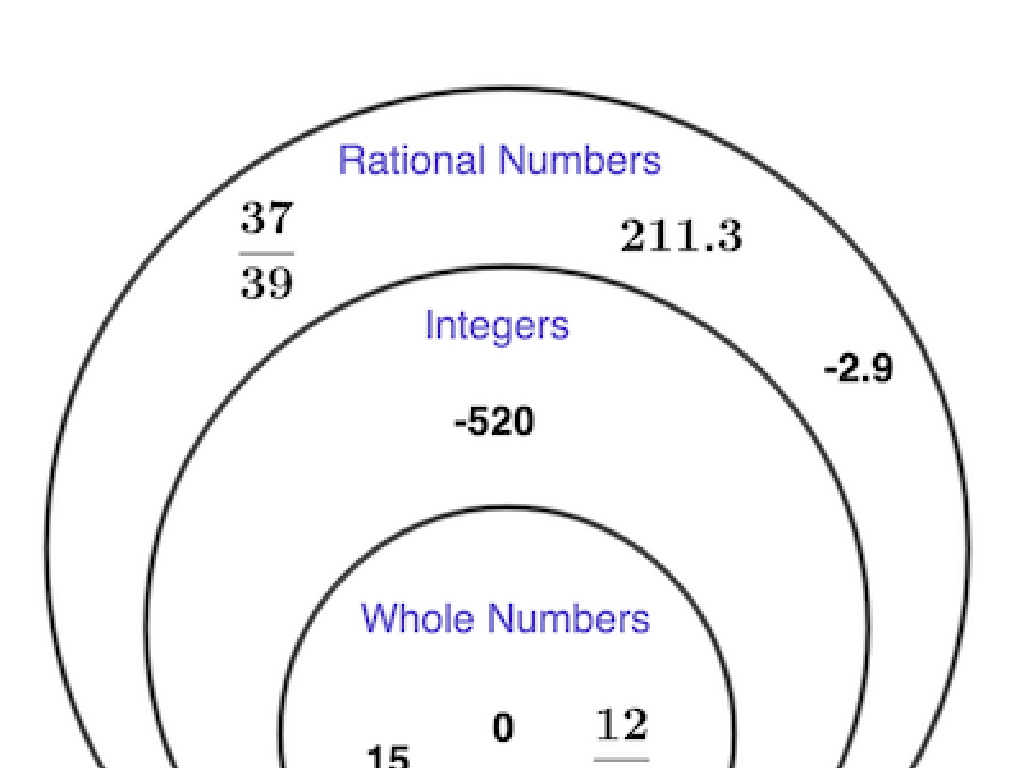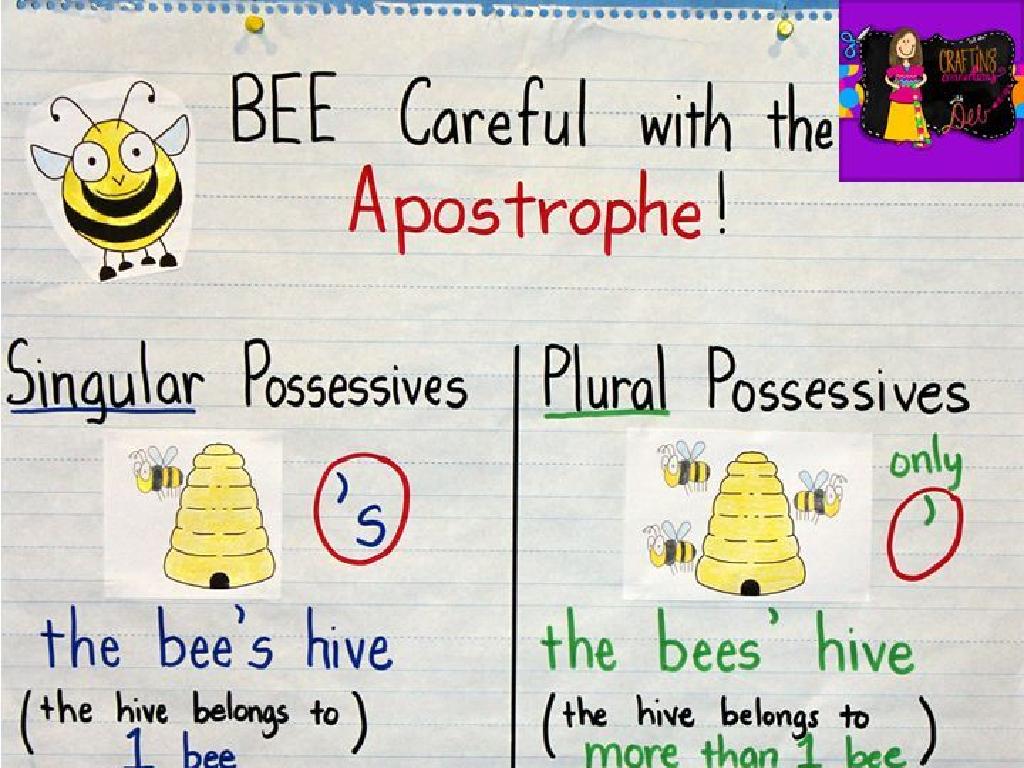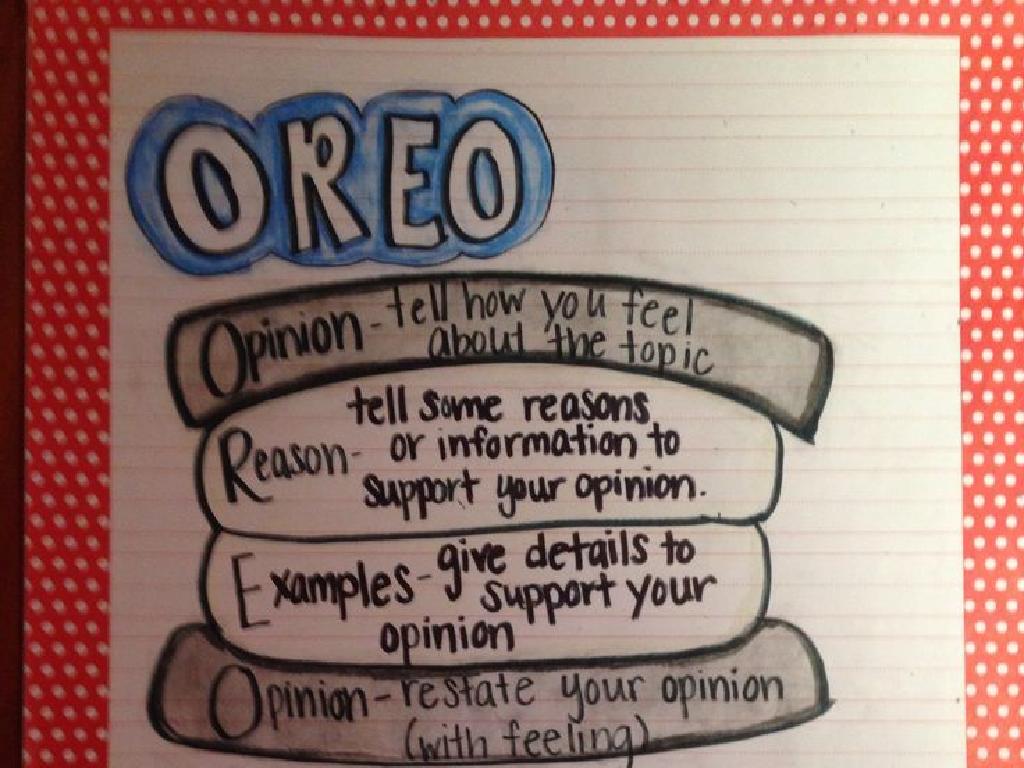Graph Points From A Table
Subject: Math
Grade: Fifth grade
Topic: Coordinate Plane
Please LOG IN to download the presentation. Access is available to registered users only.
View More Content
Welcome to Coordinate Planes!
– Basics of a coordinate plane
– A flat surface with two number lines: horizontal (X-axis) and vertical (Y-axis).
– Understanding X and Y axes
– X-axis is horizontal, Y-axis is vertical. Together, they divide the plane into four quadrants.
– Plotting points on the plane
– Find a point using two numbers (x, y) to show its position.
– Real-life applications
– Used in maps, video games, and more to show locations.
|
This slide introduces students to the concept of coordinate planes, an essential part of graphing in mathematics. Start by explaining the two-dimensional plane with perpendicular number lines, the X-axis (horizontal) and the Y-axis (vertical). Discuss how the axes divide the plane into four quadrants and how every point on the plane is represented by an ordered pair (x, y). Emphasize the practicality of coordinate planes by giving examples from everyday life, such as locating a place on a map or characters in a video game. Encourage students to think of other examples where they might encounter coordinate planes. This foundational knowledge will be crucial for their success in graphing and understanding more complex mathematical concepts.
Understanding Tables of Values
– Define a table of values
– A grid showing pairs of numbers that relate to each other.
– Tables organize information
– Like a treasure map, tables guide us to information quickly.
– Daily examples of tables
– Timetables, leaderboards, and chore charts are common examples.
– Graphing points from tables
– Use the table to plot points on a coordinate plane.
|
This slide introduces students to the concept of a table of values, which is a fundamental tool in mathematics for organizing pairs of numbers. Explain that tables are like maps that help us find information. Provide relatable examples such as timetables for buses, scoreboards in sports, or chore charts at home to illustrate the use of tables in everyday life. Then, transition to how these tables can be used to graph points on a coordinate plane, setting the stage for practical applications in graphing. Encourage students to think of other examples of tables they encounter daily. In the next class, practice creating a table of values from given data and graphing the corresponding points on a coordinate plane.
Plotting Points on the Coordinate Plane
– Reading a table of values
– Tables show numbers in rows and columns
– Finding X and Y coordinates
– X is horizontal, Y is vertical position
– Plotting points step-by-step
– Use the grid to place points where lines meet
– Practice with a class activity
– We’ll plot points together as a class
|
This slide introduces students to the concept of plotting points on a coordinate plane using a table of values. Start by explaining how to read the table, identifying the X (horizontal) and Y (vertical) values. Then, demonstrate how to find each point’s position on the plane by drawing an example on the board. Next, guide students through plotting points step-by-step. Finally, engage the class with a hands-on activity where they plot a set of points to create a picture or pattern. This will help solidify their understanding of the coordinate plane and how to interpret data from a table.
Connecting Points on the Coordinate Plane
– Purpose of connecting points
– To visualize relationships between data
– Creating shapes and patterns
– Use points to form recognizable shapes
– Significance of point order
– Order determines the shape’s appearance
– Practical applications
|
This slide aims to explain why we connect points on a coordinate plane. Connecting points helps us visualize relationships between different pieces of data, which is essential in math and real-world applications. By creating shapes and patterns, students can better understand geometric concepts. It’s crucial to emphasize the importance of the order in which points are connected, as this can change the appearance of the shapes and the information conveyed. Practical applications include map reading, architecture, and graphing statistics. Encourage students to practice by plotting points and connecting them to form various shapes, observing how changing the order affects the outcome.
Real-World Applications of Coordinate Planes
– Mapping services and coordinates
– GPS uses latitude and longitude like a grid
– Weather charts on a graph
– Plot temperature and time to see patterns
– Video games use coordinates
– Characters move on a grid defined by x, y values
– Understanding practical uses
|
This slide aims to show students how the coordinate plane concept they learn in math class applies to real-world situations. Mapping services like GPS use a grid system similar to coordinate planes to pinpoint locations. Weather charts often use graphs to show changes over time, which can be plotted using coordinates. Video games, especially those that involve navigation or movement, use coordinate planes to determine the position of characters and objects. By understanding these applications, students can see the value of coordinate planes beyond the classroom and how they’re used in technology and daily life.
Class Activity: Coordinate Plane Treasure Hunt
– Pair up for a map adventure
– Plot given points on your map
– Use the coordinates from the table to place your points
– Connect points to find the treasure
– Follow the sequence to reveal the treasure’s location
– Work together and have fun
|
This activity is designed to reinforce students’ understanding of plotting points from a table onto a coordinate plane. Students will work in pairs to foster collaboration. Provide each pair with a map that has a coordinate grid overlay and a table of points to plot. As they plot each point, they should connect them in the given order, which will lead them to the ‘treasure’ a point or area on the map you’ve designated. This hands-on activity not only solidifies their grasp of the concept but also adds an element of excitement to the learning process. Possible variations for different pairs could include different sets of points leading to various treasures, ensuring a unique experience for each group.






